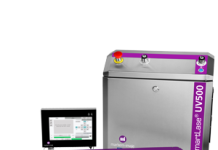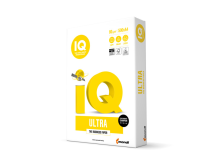Contiweb marketing manager Erik Andriessen discusses how the rising popularity of short run jobs in the printing industry – be it in the context of gravure, flexo, offset or digital – is an accepted reality. However, advances in technology that deliver them efficiently and profitably are still vital – particularly in the flexible packaging sector.
Many packaging printers are still in the mindset that press speed and material and consumable costs are the determining factors of profit margins, however, in short run printing a gear-change is required. The game now revolves around job changeovers. For example, a small job of 304,8m (1000 feet) printing at a speed of 60,9m (200 feet) per minute takes five minutes. The same job at a speed of 76,2m (250 feet) per minute takes just four. That’s a gain of one minute that can be used to print another job. However, if job changeovers take an hour or longer, that ‘one minute’ shrinks into insignificance.
Here we evaluate common printing technologies in the flexible packaging market, including gravure, flexo, offset and digital, and their particular strengths and weaknesses.
Gravure – long run paradise
Gravure systems provide exquisite prints, and value-adding enhancements such as metallic effects can run inline at the same high speeds. As a result, gravure provides compelling benefits: cost per unit is low and quality is high. That is however, when printers are operating with long run lengths. Changeover times are lengthy with this process, and the cost of gravure print cylinders is high. So, while gravure is ideal for large jobs, for smaller jobs it is no longer time or cost efficient.
Flexo – lower cost, long run
Also delivering high speeds and reducing costs through economies of scale, flexo printing provides the additional benefit of cheaper plates than gravure. When printing lots of smaller jobs, printers can soon see savings in platemaking. However, as with gravure, changeovers are lengthy. Today, jobs are requiring more and more colour, and more colour results in even longer changeovers. The quality of flexo printing, even HD flexo, still hasn’t quite reached the heights of gravure. Flexo can offer some savings compared to gravure, but still sits more comfortably with long run lengths.
Digital – short run marvel, but not without limitations
Digital technology has stolen the limelight in recent years. With no plate changes, and assignments set in advance, changeovers are virtually nonexistent, making short run printing a perfect fit. The drawbacks however, are a lack of flexibility and options. Running at significantly lower speeds than other technologies, there’s no possibility of profit on medium to long jobs, plus many technologies use a ‘cost per click’ business model, making it difficult for printers to boost margins. Primers must also be added to substrates adding cost and another process to the workload. There is also inconsistency on the number of substrates offered, the colour spectrum available, print quality and ink migration, so printers are restricted in what they can offer. Digital is excellent for mock-ups and extremely short runs, but there are limitations on options, quality and profitability.
Offset – high quality for smaller print runs
Finally, how does web offset fit in the mix? Delivering excellent quality, with a typical resolution of 200 lines/2.5cm (an inch), better than flexo, offset provides high quality printing. With no anilox roller, a wider colour gamut is achievable, and designs of completely different colours can be printed right next to each other – ideal for printing multiple SKUs in one run. Offset plates are more economical than flexo and gravure plates, so short runs still make healthy margins. No solvents are used in the offset process, bringing ink migration down to virtually zero, making it ideal for food, beverage and pharmaceutical packaging. Using less ink than other processes, usually a benefit in cost savings, provides an obstacle for offset in flexible packaging printing: solid whites and varnishes cannot be achieved. Consequently, offset is often used in combination with flexo or gravure. Although adoption is still in its infancy, offset provides some persuasive arguments for use in short run flexible packaging printing.





















